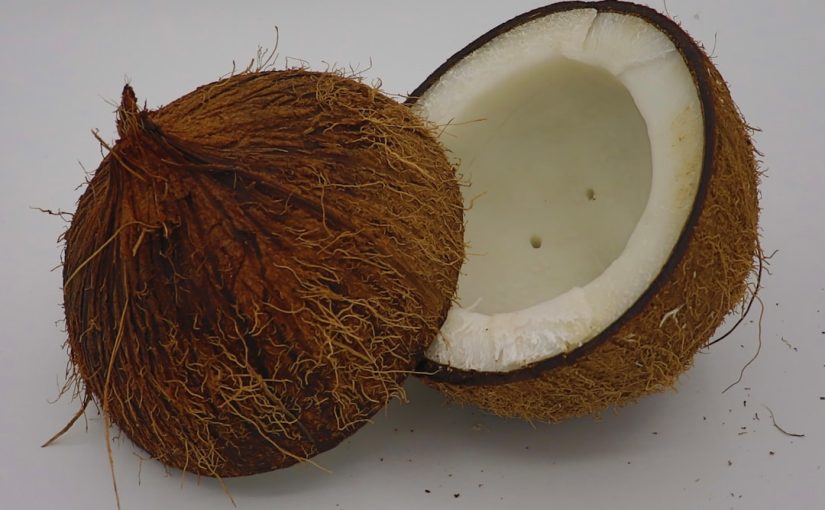The coconut, a marvel of nature often mistaken for a nut, is botanically a drupe, celebrated for its refreshing water and versatile meat. Beyond its culinary uses, this tropical fruit holds a fascinating secret within its hard shell: the location and function of its cotyledon. Unlike many plants where the cotyledon, or “seed leaf,” is readily visible upon germination, the coconut’s equivalent is a hidden, highly specialized structure that plays a pivotal role in the emergence of a new palm. Understanding where this critical component resides and how it operates unveils a remarkable adaptation, essential for the coconut’s survival and growth. This article will explore the intricate journey of the coconut’s cotyledon, revealing its unique form and indispensable contribution to germination.
The coconut’s unique anatomy and germination
To understand the cotyledon’s location, one must first appreciate the coconut’s distinctive structure. The familiar fibrous husk is the mesocarp, protected by the smooth exocarp. Inside lies the hard endocarp, which encases the seed. Within this shell, we find the white, solid endosperm (the “meat”) and the liquid endosperm (coconut water). Crucially, embedded within the solid endosperm, at the base of one of the three “eyes” (germination pores), lies the tiny embryo. This embryo is the future coconut palm. Unlike most seeds where the cotyledon might emerge above ground or remain below as a storage organ, the coconut’s germination process is entirely internal within the confines of the shell. This unique setting necessitates a specialized approach for nutrient absorption, which is precisely where the cotyledon takes on a form unlike any other.
Unveiling the cotyledon: The haustorium’s role
The cotyledon in a coconut is not a typical leaf-like structure; instead, it transforms into a specialized organ known as the haustorium. This remarkable adaptation is the direct answer to where the cotyledon resides. From the tiny embryo, the haustorium begins to grow inward, expanding into the central cavity of the coconut. It acts as an absorptive organ, perfectly designed to extract nutrients from the surrounding endosperm. As it develops, it takes on a spongy, cream-colored texture, filling a significant portion of the space previously occupied by coconut water and absorbing the solid meat. This internal growth ensures that the developing seedling has a continuous supply of energy and building blocks, all while remaining protected within the sturdy endocarp.
The haustorium’s development and nutrient transfer
The development of the haustorium is a masterclass in biological efficiency. Once germination begins, the haustorium gradually enlarges, becoming increasingly spongy and porous. This texture provides a large surface area for nutrient absorption. It secretes enzymes that break down the complex carbohydrates, fats, and proteins stored within the solid endosperm and dissolved in the liquid endosperm (coconut water) into simpler, absorbable forms. These nutrients are then drawn into the haustorium and transported to the developing embryo. As the haustorium grows, the volume of coconut water diminishes, and the surrounding solid endosperm may appear “eaten away” or softer, testament to the haustorium’s diligent work. This sustained nutrient supply is vital for the initial growth of the plumule (the future shoot) and the radicle (the future root), which will eventually emerge from the softest of the three germination pores.
Here is a breakdown of key components during coconut germination:
| Component | Function during germination | Notes |
|---|---|---|
| Embryo | The nascent plant, located in one “eye.” | Develops into the palm tree. |
| Haustorium (Cotyledon) | Absorbs nutrients from endosperm. | Spongy, internal growth, crucial for seedling survival. |
| Endosperm (Solid) | Primary nutrient source (fats, proteins, carbs). | Gradually consumed by the haustorium. |
| Endosperm (Liquid) | Provides water, sugars, and minerals. | Decreases as haustorium absorbs it. |
| Germination pore | Softest “eye” through which the sprout emerges. | The haustorium originates from the embryo adjacent to this pore. |
The haustorium’s impact on coconut growth
The tireless work of the haustorium is fundamental to the successful establishment of a new coconut palm. Without this specialized cotyledon, the embryo would lack the necessary fuel to break dormancy and initiate growth. As the haustorium efficiently transfers nutrients, the plumule begins to elongate, pushing its way out through the softest germination pore, reaching for sunlight. Simultaneously, the radicle emerges, seeking purchase in the soil to anchor the young plant and begin absorbing water and minerals independently. The haustorium thus serves as the lifeline, bridging the gap between stored food reserves and the seedling’s ability to photosynthesize and draw nutrients from the environment. It is a temporary but indispensable organ, perfectly engineered to ensure the future of the coconut species in challenging tropical environments.
In essence, the coconut’s cotyledon is a hidden wonder, morphing into the highly specialized haustorium, a spongy, absorptive organ nestled within the coconut’s inner cavity. This internal growth strategy is a testament to the coconut palm’s remarkable evolutionary adaptations, allowing it to thrive and germinate in diverse environments. From its unassuming start as part of the tiny embryo, the haustorium diligently breaks down and transports vital nutrients from the coconut water and meat, acting as the sole provider for the developing plumule and radicle. Its efficiency ensures that the nascent seedling has the energy reserves needed to emerge from its protective shell and begin its journey towards becoming a magnificent palm. This intricate process underscores the profound intelligence embedded in nature’s design, where even the most familiar fruits hold biological secrets waiting to be appreciated.
Image by: Michele Wales
